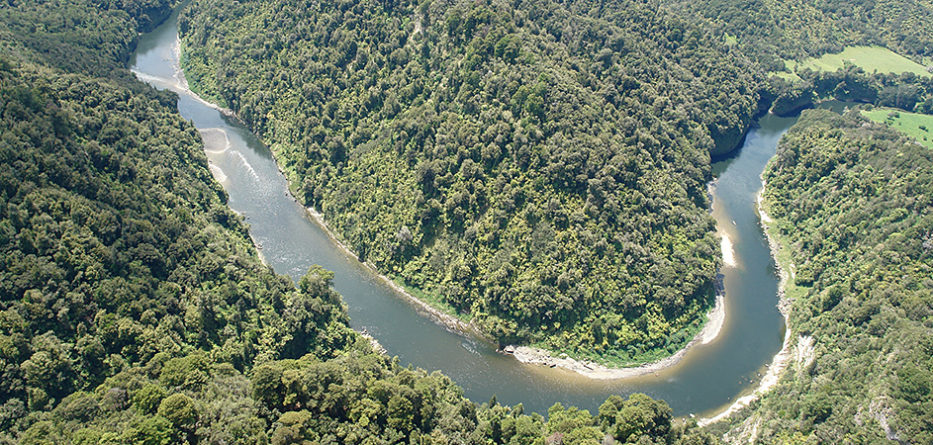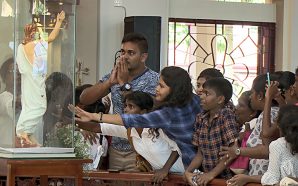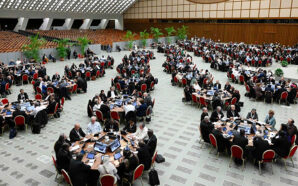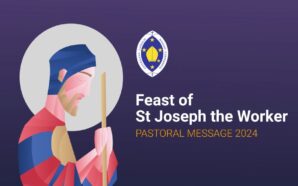The granting of personhood to the Whanganui River in New Zealand provides a distinctive lens through which to view our perspective on our connectedness to all of creation, writes Monica Dutton.
New Zealand is a nation of firsts.
In 1893 it became the first country in the world to grant women the right to vote. Just over 100 years later it was also the first to have three women in power simultaneously with Helen Clark as Prime Minister, Dame Silvia Cartwright as Governor-General and Sian Elias as Chief Justice. Significantly, New Zealand’s government reflects the diversity of its population in terms of representation of women (48.3%), people of colour, LGBTIQA+ and Indigenous Members of Parliament.
Due to the extraordinary popularity of Prime Minister Jacinda Ardern, some have suggested there is a substantive case to be made for Australia becoming New Zealand’s ‘West Island’. Ms Ardern’s ability to ‘read the room’ and communicate with empathy and compassion on human rights issues and in times of crisis is in stark contrast to many of her counterparts.
The Kiwis also punch well above their weight on the international stage with remarkable success in the sporting arena, music and the arts. The All Blacks recently annihilated the Wallabies in a 3-0 clean sweep of the Bledisloe Cup; and New Zealand finished in an astounding 13th place in the Tokyo Olympics medal tally, and 21st in the Paralympics.
New Zealand was first to introduce the eight-hour working day – leaving plenty of time for recreational firsts including jet boating, zorbing and bungy jumping!
All this from a country with a population less than that of Sydney or of Melbourne.
Nonetheless, one of the most profound, although perhaps lesser known, of Aotearoa’s (New Zealand’s) many significant achievements is that it is the first country to grant personhood to a river.
Yes, that is correct.
In 2017, the Whanganui River on Aotearoa’s North Island became the first river in the world to be legally recognised as a person.
The implications of this parliamentary decision, which came after one of the most protracted legal battles in Aotearoa’s history, are momentous. Consideration of the river’s health and wellbeing must be taken into account in any future decisions relating to farming, forestry, water extraction, damming and the development of hydroelectric projects. The river is a legal entity in possession of enforceable rights.
The Whanganui iwi, the Māori people living along the river, have an inalienable connection to its entire ecosystem. The river is revered as a sacred ancestor and its people had been fighting for its legal protection for more than 160 years. The Wanganui has been described as their heartbeat, “I am the river, and the river is me.”
This inextricable connectedness and deep listening to all of creation is at the centre of the spirituality of First Nations people across the globe. Granting human rights to a river is a profound and unique expression of this belief, and speaks to the very heart of Laudato Si’:
“Because all creatures are connected, each must be cherished with love and respect, for all of us as living creatures are dependent on one another.” (Laudato Si’ #42)
Granting human rights to a river …
Is there a more exquisitely beautiful illustration of listening and responding to the cry of the earth?
Cry of the Earth, Cry of the Poor is the title of the Australian Catholic Bishops’ Social Justice Statement for 2021-2022. In drawing from Scripture, theological tradition, Catholic Social Teaching, and the wisdom of the world, including the insights of our First Nations people, this statement reiterates and affirms that we human beings need “a change of heart, mind and behaviour”.
Response to the cry of the earth is the first of the seven goals of the Laudato Si’ Action Platform – Pope Francis’ invitation to a seven-year journey of renewal towards worldwide conversion to ecological sustainability.
The Sisters of the Good Samaritan have been on this journey for quite some time. Commitment to the value of stewardship, along with a deep spiritual awareness of the presence of God in all things have always been at the heart of Good Samaritan life and mission.
Recent Statement of Directions have renewed the commitment to creation and to ecological conversion, and Wivenhoe Conservation is part of a broad range of initiatives in working towards ecological sustainability into the future. Importantly, specific aims to develop an eco-action plan using the Laudato Si’ goals, and to foster ecological consciousness in liturgy and in everyday life emerged from the July Extended Plenary Council.
We still have many lessons to learn from Aotearoa. It plans to transition to 100% renewable energy by 2035. It has recognised Te Urewera, a former national park, and Taranaki Mountain as legal entities; and the Aoraki Mackenzie region in the South Island has been declared the world’s first International Dark Sky Reserve.
The granting of personhood to the Whanganui River provides a distinctive lens through which to view our perspective on our connectedness to all of creation. How different would our worldview be if we recognised all rivers, mountains and created beings as persons? As the Brother Sun and Sister Moon of Saint Francis of Assisi? I daresay we would not be facing the disastrous tragedy occurring in the Murray-Darling Basin if it had legal rights and could sue for mistreatment of its health and wellbeing.
We still have much to learn.
The basis for Pope Francis’ seven-year plan for renewal in the Laudato Si’ Action Platform is clear: “Many things have to change course, but it is we human beings above all who need to change”. (Laudato Si’ #202)
To view the video Good Samaritan Statement of Directions: Committing to Ecological Conversion featuring the seven goals of the Laudato Si’ Action Platform, click here.
Monica Dutton has a background in primary, secondary and tertiary education and has a particular interest in developing formation and immersion programs. She been working with Good Samaritans for almost 20 years and currently holds the position of Spirituality and Mission Animation Leader for the Congregation.
This article was first published in the September 2021 edition of The Good Oil, the e-magazine of the Sisters of the Good Samaritan. Republished with permission.








